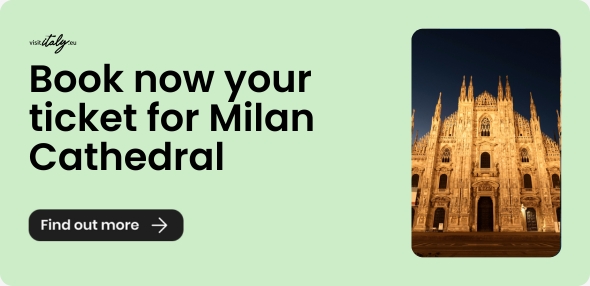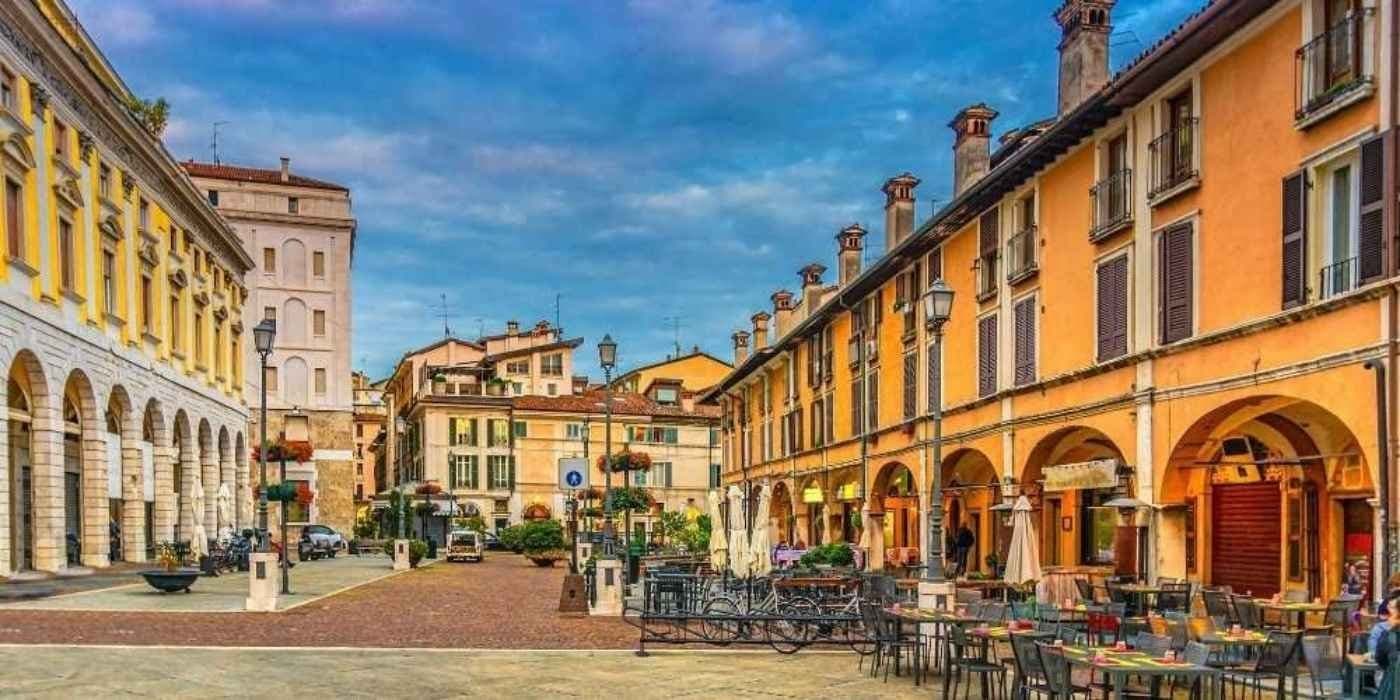Brescia is a city surrounded by the Alps, known to be the perfect base from which to explore famous natural beauties such as Lake Garda, Sirmione, the Tonale Pass and Lake Iseo.
However, not everyone knows that the historical centre of Brescia is an enchanting place, endowed with an artistic and cultural heritage that is among the most important in Italy. Along the city's cobbled alleys, you can discover marvellous palaces, many vestiges of the Roman era, places of artistic interest, craft and fashion shops, and many restaurants specialising in local delicacies.
Let's discover together the main things to see and do in the historical centre of Brescia, starting with the artistic and cultural sights and ending with practical tips to make your visit unique and unforgettable.

10. Piazza della Loggia, the beating heart of the historical centre
.jpg)
We begin our tour with one of Brescia's main squares, that of the Loggia. This square rose to prominence because of a news event that took place in the early 1970s: a bomb was detonated during a demonstration against neo-fascist terrorism, causing several deaths and injuries. If, in the memory of Italians, this name brings back these sad events, for those visiting Piazza della Loggia for the first time, the impression is bound to be different.
This Renaissance-era square has retained its charm also thanks to the atmospheric lighting. Here you can admire the splendid façade of Palazzo della Loggia, in Botticino marble with its lozenge-shaped columns and sculptural decorations. Under the cross-vaulted portico, two splendid fountains flank the portal facing the majestic Renaissance staircase leading to the Vanvitelliano hall on the upper floor. Opposite the Loggia is the famous Clock Tower.
9. The museum of Santa Giulia, a UNESCO heritage site
.jpg)
The monastery complex of Santa Giulia and the museum it houses (Unesco heritage) are two places you should not miss when visiting the historic centre of Brescia.
The monastery is rich in historical memories from the Roman era, followed by the Longobard monastery and the Romanesque oratory. The basilica and crypt of San Salvatore are splendid examples of medieval art, as are the oratory and cloisters.
Among the marvellous pieces preserved in the museum of Santa Giulia, the Winged Victory, the symbol of the city of Brescia, and the gem-covered cross of the Lombard king Desiderius stand out.
8. The castle of Brescia, a symbol of the city
.jpg)
On Cidneo Hill, where the first settlement of the city once stood, today stands Brescia castle, the symbol of the city.
By visiting this castle, you will have the opportunity to learn about the history of Brescia from the Bronze Age of the ancient settlement, through the early Middle Ages to the Venetian domination and on to the French conquest and Austrian rule.
This place was the scene of the famous 5 days of Brescia when some partisans were shot in 1945. During your visit you will pass several cobbled streets from the medieval era, some of the oldest and most valuable vineyards in Italy, underground passages, and museums and admire an incomparable panorama.
7. The Roman Theatre and the Capitoline Temple in Brescia, places of power
.jpg)
In the historic city centre, near the Capitoline Temple, you will also find the Roman Theatre of ancient Brixia. In the beautiful archaeological park that houses the theatre, you can admire many remains from the Roman era such as the Sanctuary from the Republican era and the Capitolium.
The Roman Theatre has been declared a UNESCO World Heritage Site and is part of the serial site Longobards in Italy: places of power (568 - 774 AD).
The theatre was built in the Flavian era and was used as a place of power by various rulers, primarily the Lombards, until the 5th-century earthquake. The area was brought to light in 1823 together with numerous other finds that now constitute the archaeological treasure of the city of Brescia.
6. The Duomo Vecchio and the Lombard Romanesque style
.jpg)
One of the most significant and fascinating monuments in the historic centre of Brescia is the Duomo Vecchio. This structure is a splendid example of Romanesque architecture, developed in the Lombard area.
The building has a circular layout and is composed of two superimposed rotundas, the first having a larger diameter. The interior of the Duomo is awe-inspiring: in the main area, you can admire the eight pillars supporting elliptical arches above which the arched windows and the dome open.
The oldest part of the Duomo is the crypt, a room consisting of five naves and a barrel-vaulted roof. Inside the cathedral are some truly remarkable works of art such as the cycle of paintings by Moretto and Romanino, as well as works by Grazio Cossali, Antonio Gandino and Francesco Maffei.
5. What to eat and drink in the historic centre of Brescia
.jpg)
After a busy day of sightseeing and walking around the city of Brescia, prepare your palates, because this beautiful city at the foot of the Alps offers mouth-watering gastronomic solutions! Among the most famous first courses, we recommend malfatti (spinach gnocchi seasoned with butter and sage) and casoncelli, a dish famous throughout the Alps. If you choose to dedicate your meal to meat, know that donkey stew and beef cooked in olive oil are a culinary delicacy not to be missed in this region. Brescia is also the city of polenta taragna, polenta made from poor flours and accompanied by cheese.
However, the city of Brescia is famous for its extraordinary apertivi. Thanks to the Franciacorta wine-growing area just a stone's throw from the city, you will find sensational wines of the highest level.
In the historic centre of Brescia, a must is the Pirlo cocktail, made with white wine, red bitter, seltzer and lemon peel: accompanied by fried codfish it is a dream come true. In the historical centre of Brescia, you will find many bars and delicatessens offering traditional dishes and typical aperitifs.
If you are looking for an incredibly special place to taste the best delicacies of Brescia, stop at Bar Marchino, near the Catholic University. Here you can enjoy an aperitif with local wines and craft beers accompanied by typical regional cold cuts and cheeses such as pancetta, mortadella pecorino and cheeses from Val Camonica and the upper Lake Garda area.
Here you will breathe in the typical atmosphere of the aperitif hour in Italy, with laughter, cheerfulness, and excellent products to taste; the interior of Bar Marchino is reminiscent of the old village shops of the late twentieth century, where the charcuterie maker prepared excellent sandwiches and tasty gourmet dishes.
4. The Pinacoteca Martinengo, an explosion of plasticity and colours
.jpg)
The Pinacoteca Martinengo will allow you to immerse yourself in beauty, thanks to its collection of 480 works. Here you will find some of the most important authors of the Renaissance, such as Lotto and Raphael, as well as a large number of exponents of 19th-century paintings such as Canova.
The Art Gallery is spread over twenty-one exhibition rooms that fit perfectly into the architectural structure of the palace. Among the most significant works are The Angel of 1500 and Raphael's Christ Redeemer Blessing. The collection has been enriched with valuable furnishings such as gold and ivory.
3. The Docus Park, an oasis of peace
.jpg)
This enchanting corner of urban greenery, located just a stone's throw from the historic centre of Brescia, has developed into a city park over the last forty years. In the past, this place was a garden, specifically a Napoleonic bequest for the Duchess Ducos who helped the emperor during his descent into Italy. The beautiful centuries-old sequoias, ponds and friendly turtles that live here make this the ideal place for a cool moment of relaxation or a walk-in nature.
2. The Shopping Streets in the Historic Centre
.jpg)
Brescia is undoubtedly a high-profile city as far as shopping and boutiques are concerned: there are more than 1,200 shops in the city centre, many of which are historic Lombard establishments. If you are looking for big Italian brands, design objects and avant-garde handicrafts, Brescia is the city for you.
The best streets for your shopping are in the heart of the historical centre, such as Corso Magenta, which branches off from Piazzale Arnaldo and offers a wide selection of boutiques, bookshops and shoe shops.
Near the Teatro Grande you will find Corso Zanardelli, Via XX Giornate and Corso Palestro where magnificent 16th-century houses frame the city's shops. With the neighbouring squares, this is also the ideal place to stop for an aperitif.
Corso Martiri della Libertà (the avenue that takes you from the station to the city centre by train) offers a wide variety of shops, while to admire the workshops of young artisans and designers, you will have to go to the streets of the Carmine, an old working-class district also known, along with Piazzale Arnaldo, for its lively nightlife.
1. Brescia underground, the city's underground secrets
.jpg)
Let yourself be captivated by the charm of underground Brescia, a labyrinth of centuries-old pathways, marble bridges and waterways. This treasure-trove beneath the road surface was discovered in 2006 by a small group of friends with a passion for urban legends who decided to find the places where the city's traditional tales were set.
So, at night, they descended into the maintenance holes to discover the Brescia Underground and drew maps of the underground passages and uncovered forgotten secrets. This experience will allow you to take a fascinating journey through ancient architecture to discover the city's historical past
About the author
Written on 19/07/2022



Gloria Venturini
The historic centre of Brescia is a beautiful place to immerse yourself in Italian culture and art, while enjoying fabulous scenery and excellent food